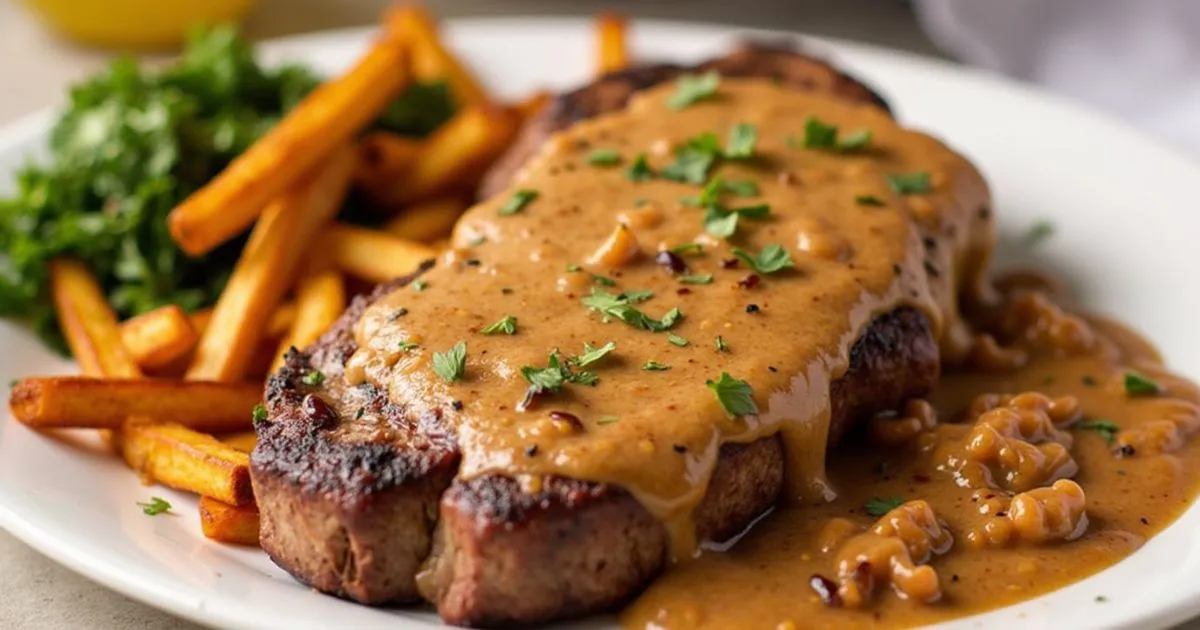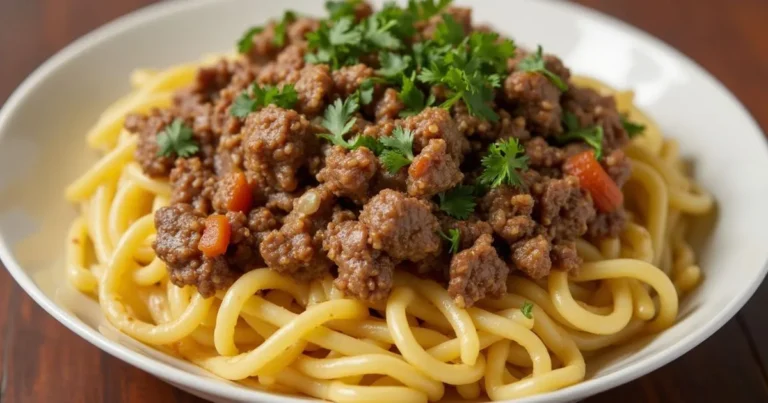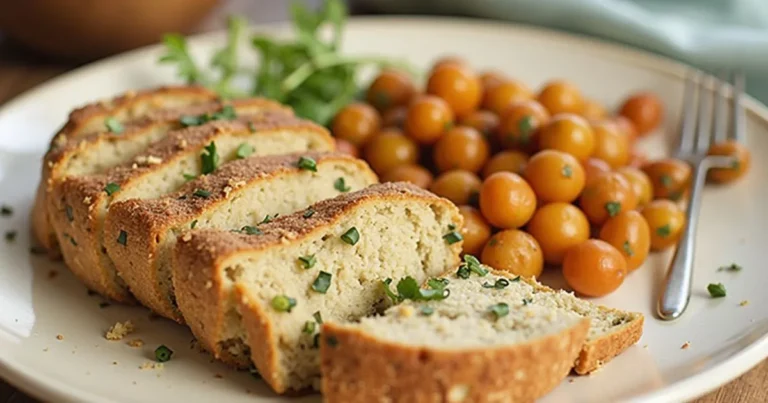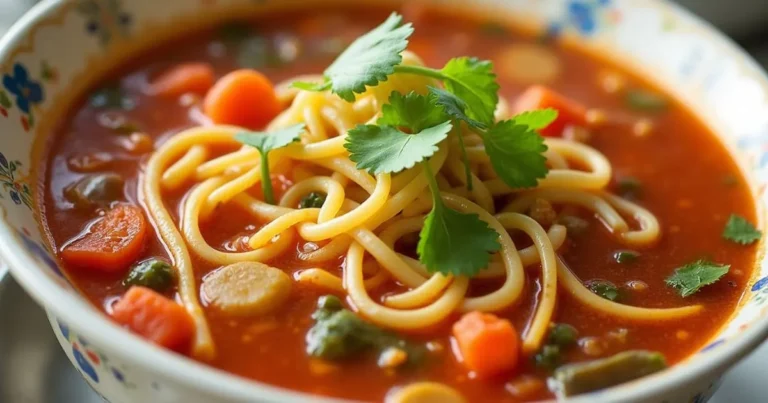7 Steak Frites Sauces That’ll Make You Never Want Ketchup Again
So there I was last week, standing in my kitchen at 7 PM on a Wednesday, staring at this beautiful ribeye and perfectly crispy fries. Should’ve been the perfect dinner, right? Wrong. It was boring as hell.
Don’t get me wrong – the steak was cooked perfectly, the fries were golden, but something was missing. It hit me while I was chewing my third disappointing bite: I was eating like a college freshman. Just meat and potatoes with nothing to tie it all together.
That’s when I remembered this random Tuesday three years ago in Lyon. I’d ducked into this cramped little bistro to escape the rain, and the waiter, who thought I was another clueless American tourist, brought out my steak frites with three tiny bowls of sauce. I had no clue what any of them were, but man, they completely transformed the meal. Each one brought out different flavors in the steak and made those fries sing.
I’ve been obsessed with recreating that experience ever since. After burning through way too much butter, crying over broken sauces, and accidentally making what I can only describe as “herby mayonnaise disasters,” I finally cracked the code. These seven sauces will make your steak frites go from “decent dinner” to “why am I not opening a restaurant?”
Table of Contents
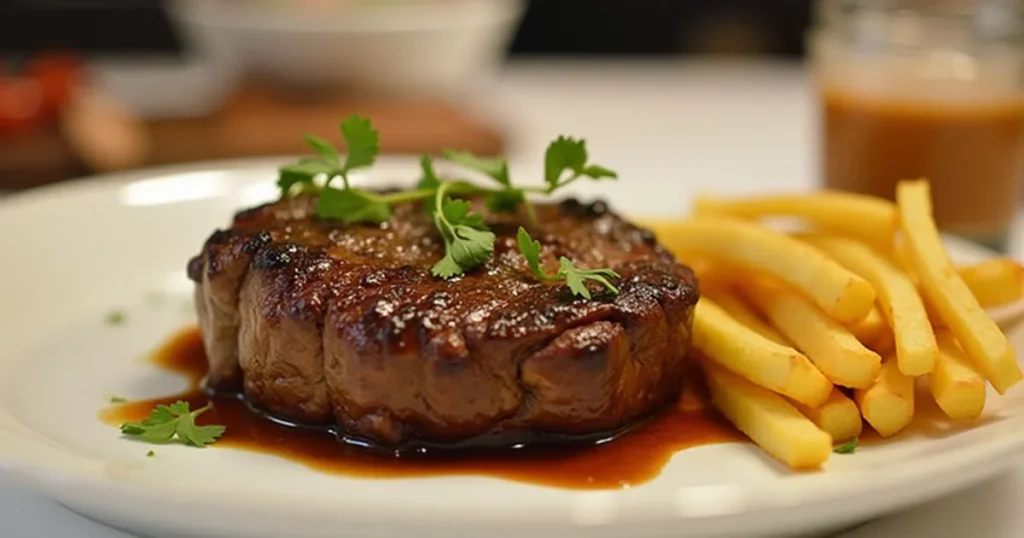
Why Most People Eat Boring Steak Frites (And How to Fix It)
The Problem Everyone Ignores
Here’s the thing – steak and fries by themselves are kind of one-dimensional. Yeah, they taste good, but after a few bites, your brain gets bored. It’s all salt, fat, and protein. No contrast, no surprise, no reason to pay attention to what you’re eating.
I used to think sauce was just an extra thing fancy restaurants did to justify charging more. Turns out, those French guys figured something out centuries ago that we’re still catching up to. Your taste buds need variety to stay interested. Without it, even the best steak starts tasting like expensive cardboard after bite four.
Think about it – when’s the last time you ate plain pasta and thought “wow, this is amazing”? Never, because pasta is just a vehicle for sauce. Same deal with steak frites, except somehow we convinced ourselves that good meat doesn’t need help.
What Happens When You Add Sauce
Once I started paying attention, I noticed something weird. With the right sauce, I could make each bite of steak taste as good as the first one. Acidic stuff like chimichurri cleans your palate between bites. Creamy sauces give you temperature contrast that keeps your mouth interested. Even simple herb oil adds layers of flavor that make your brain process what you’re eating instead of just mindlessly chewing.
It’s not rocket science, but understanding this changed how I cook. Instead of just throwing protein and starch on a plate, I started thinking about the whole experience.
The French Standards (That Live Up to the Hype)
Béarnaise – The Holy Grail
Warning: This will break on you at least once | Time: 15 minutes of pure stress
Béarnaise is the sauce that separates real cooks from people who just heat food. It’s hollandaise’s cooler, more sophisticated cousin – the one who went to culinary school and comes back using words like “emulsification.”
I’m not gonna lie to you. This sauce has ruined more dinners than I care to admit. The first time I tried making it, I ended up with what looked like scrambled eggs swimming in butter. My girlfriend at the time took one look and said, “Is this supposed to look like that?” It was not.
But when do you get it right? Jesus. It’s like liquid gold with herbs.
| What You Need | How Much | Real Talk |
|---|---|---|
| Egg yolks | 3 big ones | Room temperature or you’re screwed |
| White wine vinegar | 2 tablespoons | Don’t use the cheap stuff |
| White wine | 2 tablespoons | Drink the rest |
| Shallot | 1 medium, chopped tiny | Sweet onion works too |
| Fresh tarragon | 2 tablespoons, chopped | Dried is not the same thing |
| Butter | Half a stick | Cut it up small |
| Salt and white pepper | However much tastes right |
First, make what the French call a “reduction,” which is just cooking liquid until most of it disappears. Throw the vinegar, wine, shallot, and half your tarragon in a small pan. Cook it until you’ve got maybe 2 tablespoons of liquid left. Strain out the chunky bits and let it cool down.
Now comes the scary part. Get a bowl over barely simmering water – not boiling, or you’ll make scrambled eggs. Whisk your egg yolks, then slowly add your cooled reduction while whisking like your life depends on it.
Here’s where people mess up: they dump all the butter in at once. Don’t do that. Add it one small piece at a time, whisking constantly. Each piece needs to completely disappear before you add the next one. It takes forever, but it’s the only way.
If it breaks – and it might – don’t freak out. Sometimes you can save it by whisking in a tablespoon of cold water. Sometimes you start over. That’s cooking.
Roquefort Cream – For When You Want to Show Off
Difficulty: Pretty easy | Time: 10 minutes tops
This is my secret weapon sauce. It looks fancy, tastes expensive, and is nearly impossible to screw up. Perfect for when you want people to think you know what you’re doing.
The key is good Roquefort cheese – not those blue cheese crumbles from the grocery store salad bar. Real Roquefort has this incredible sharpness that mellows out beautifully in cream.
| Ingredients | Amount | Notes |
|---|---|---|
| Roquefort cheese | 4 oz, broken up | Let it come to room temp |
| Heavy cream | Half a cup | The real stuff |
| Butter | 2 tablespoons | Makes it silky |
| Cognac | 1 tablespoon | Skip if you don’t have it |
| Black pepper | Fresh ground | |
| Chives | 1 tablespoon, chopped | For looks |
Heat the cream until it’s steaming but not bubbling. Take it off the heat and whisk in the room-temperature cheese chunks. The warm cream melts the cheese without making it grainy.
Add the cognac while it’s still hot – it cooks off some alcohol but leaves this amazing depth. Finish with butter and pepper. The whole thing takes maybe 10 minutes and makes even cheap steak taste like it cost $50.
The only way to ruin this is by letting it boil, which makes the cheese seize up and get weird. Keep it gentle.
International Stuff That Works
Chimichurri – The Gateway Drug
Difficulty: Can you chop herbs? | Time: 5 minutes
This is where I tell most people to start. It’s impossible to mess up, it tastes incredible, and it works on everything. I discovered it at a food truck in Austin at 2 AM after too many beers, and it completely changed my perspective on what steak sauce could be.
| What Goes In | How Much | Pro Tips |
|---|---|---|
| Flat-leaf parsley | 1 cup, packed | Don’t use the curly stuff |
| Cilantro | Half a cup, packed | Trust me on this |
| Garlic | 4 big cloves | Start with less if you’re scared |
| Red wine vinegar | 3 tablespoons | Good vinegar makes a difference |
| Olive oil | Half a cup | Extra virgin, the good stuff |
| Red pepper flakes | 1 teaspoon | Adjust for your heat tolerance |
| Salt | 1 teaspoon |
Throw the garlic in a food processor and pulse until it’s chopped fine. Add the herbs and pulse until they’re roughly chopped – don’t turn them into green paste. Dump everything in a bowl and whisk in the vinegar, then the oil.
Here’s the secret nobody tells you: let it sit. Chimichurri gets better with time. Make it at least 30 minutes before you eat, but overnight is even better. The flavors blend, and the herbs release their oils.
I always make extra because it keeps for a week in the fridge and makes everything taste better. Scrambled eggs, grilled chicken, roasted vegetables – this stuff is magic.
Wasabi Aioli – My Weird Experiment That Worked
Difficulty: Mix and taste | Time: 5 minutes
This started as a late-night kitchen experiment when I had leftover wasabi from sushi night. I thought, “What happens if I mix this with mayo?” Sounds gross, I know, but it’s incredible.
| Stuff | Amount | Why |
|---|---|---|
| Good mayonnaise | Half a cup | Don’t cheap out |
| Wasabi paste | 1-2 tablespoons | Start with less |
| Rice vinegar | 1 tablespoon | Cuts the richness |
| Soy sauce | 1 teaspoon | For that umami hit |
| Sesame oil | Half a teaspoon | Just a little |
| Lime juice | 1 tablespoon | Fresh only |
| Green onions | 2, chopped | Green parts too |
Mix everything except the green onions. Taste it. The wasabi should be noticeable but not face-melting. You want heat that enhances the steak, not heat that makes you cry.
Fold in the green onions last for crunch and color. The whole thing comes together in this weird but amazing way – creamy, spicy, with these Asian flavors that somehow make beef taste even more beefy.
The Fancy Stuff (For Special Occasions)
Truffle Mushroom Sauce – Liquid Gold
Difficulty: Medium | Time: 20 minutes
This sauce makes me feel fancy even when I’m eating in sweatpants. It’s earthy, rich, and smells like expensive restaurants. Yeah, truffle oil costs money, but you only need a little, and it keeps forever.
| Ingredients | Amount | Substitutions |
|---|---|---|
| Mixed mushrooms | 8 oz | Whatever looks good |
| Truffle oil | 2 tablespoons | This is where you spend money |
| Heavy cream | Half a cup | No substitutes |
| Dry sherry | Quarter cup | Cooking wine is fine |
| Butter | 3 tablespoons | |
| Shallot | 1 big one, chopped | Or half a sweet onion |
| Fresh thyme | 1 teaspoon | |
| Salt and pepper | To taste |
The secret is getting good color on your mushrooms. Don’t crowd them – cook in batches if you need to. You want them golden brown, not grey and sad.
Start with the shallot in butter until it’s soft. Add mushrooms and cook until they’re nicely browned. Add sherry and scrape up all the tasty bits from the bottom of the pan. Add cream and simmer until it coats a spoon.
Here’s the important part: add the truffle oil OFF the heat. If you add it while it’s still cooking, you’ll lose most of that expensive aroma. Stir it in, season with salt, pepper, and thyme.
Bourbon Peppercorn – American Attitude
Difficulty: Medium | Time: 15 minutes
This happened because I was making regular peppercorn sauce and realized I was out of cognac. I had bourbon, though, and figured why not? Best accident ever.
| What You Need | How Much | Notes |
|---|---|---|
| Bourbon | Quarter cup | Mid-shelf is fine |
| Beef stock | 1 cup | Low sodium |
| Heavy cream | Third of a cup | |
| Green peppercorns | 2 tablespoons | The ones in brine |
| Butter | 2 tablespoons | Cold |
| Shallot | 1 medium, chopped | |
| Dijon mustard | 1 teaspoon |
Cook the shallot until it’s golden. Add bourbon and let it reduce by half – this cooks off the harsh alcohol but leaves the smoky flavor. Add stock and peppercorns (crush them a little first) and simmer until you’ve got about half a cup of liquid.
Add cream and mustard, simmer until it coats a spoon. Take it off the heat and whisk in cold butter piece by piece for that glossy finish.
The result is smoky, spicy, and rich. It’s especially good with thick cuts like ribeye or strip steak.
The Light Option (When You Don’t Want a Food Coma)
Mediterranean Herb Oil – Summer in a Bowl
Difficulty: Stirring | Time: 10 minutes
Sometimes you want flavor without the heaviness. This herb oil is bright, fresh, and lets the steak be the star while adding just enough complexity to keep things interesting.
| Ingredients | Amount | Notes |
|---|---|---|
| Good olive oil | Half a cup | Extra virgin |
| Fresh basil | Quarter cup, chopped | |
| Fresh oregano | 2 tablespoons | |
| Fresh thyme | 1 tablespoon | |
| Lemon zest | From 2 lemons | |
| Lemon juice | 3 tablespoons | Fresh only |
| Garlic | 2 cloves, minced | |
| Sea salt | Half a teaspoon |
Put everything in a small pan and warm it gently for 2-3 minutes. Don’t let it bubble – just warm enough to release the herb oils and blend the flavors.
You can strain it for a clean look or leave the herbs in for rustic charm. Serve it at room temperature or slightly warm, never cold.
This is perfect for summer grilling when you want something fresh and light that won’t weigh you down.
What I Wish Someone Had Told Me
Get Decent Tools
After ruining countless sauces with crappy equipment, I finally bought proper tools. A good whisk – not some flimsy thing from the dollar store – makes emulsions possible. Heavy pans heat evenly, so you don’t get hot spots that scramble eggs or burn cream.
A digital thermometer takes the guesswork out of tricky sauces. If you’re serious about making béarnaise regularly, just buy a real double boiler. Your sanity is worth 40 bucks.
Make Sauce First
Don’t try to make sauce while you’re cooking steak and fries. That’s how disasters happen. Make your sauce first, then keep it warm while you cook everything else.
Oil-based sauces like chimichurri actually get better sitting around. Cream sauces can be kept warm in a thermos. Emulsion sauces are trickier but will hold for about an hour if you keep them at the right temperature.
When Things Go Wrong
Every cook breaks béarnaise. Every cook makes grainy cheese sauce. Every cook oversalts something. The difference is knowing how to fix mistakes instead of panicking.
Broken emulsion? Whisk in cold water slowly. Grainy cheese sauce? Take it off the heat and whisk hard. Too salty? Add cream or butter. Too bland? More acid usually fixes it.
Don’t panic. Taste what you’ve got and figure out how to make it better.
Matching Sauces to Your Steak
Expensive Cuts
If you’re spending serious money on prime ribeye or dry-aged filet, don’t overpower it. Béarnaise, herb oil, or simple compound butter lets the meat shine while adding subtle complexity.
You paid for that beef flavor – let it be the star.
Everyday Cuts
Strip steaks, sirloin, and other regular cuts can handle bolder flavors. This is where bourbon peppercorn or Roquefort cream shines. These cuts have enough personality to hold their own against stronger sauces.
Tough Cuts
Working with flank or skirt steak? Acid-based sauces like chimichurri are your friend. The acid helps tenderize while the oil adds moisture and richness. Plus, bright flavors complement the beefy taste of cheaper cuts.
Make-Ahead Strategy
What Freezes
Chimichurri freezes perfectly. I make huge batches and freeze them in ice cube trays, then pop out portions as needed. Herb oil also freezes well, though it might lose some color.
Cream sauces don’t freeze worth a damn, but they keep in the fridge for 2-3 days.
What’s Better Tomorrow
Oil-based sauces like chimichurri actually improve overnight. The flavors meld, and the herbs release more oils. Make these in the morning for dinner, or the night before.
Reheating Without Disaster
Never reheat cream sauces over direct heat – they’ll break immediately. Use a double boiler or microwave at half power, stirring frequently. Add a splash of cream if it gets too thick.
Oil-based sauces should come to room temperature before serving. Nobody wants cold chimichurri.
The Real Talk
After years of making steak frites, I’ve learned that perfect sauce isn’t about following recipes exactly – it’s about understanding what you like and adjusting. Maybe you love garlic and want to double it. Maybe you prefer more tarragon in your béarnaise. Maybe wasabi aioli sounds weird, but bourbon peppercorn sounds perfect.
These recipes are starting points, not rules.
The best steak frites I’ve made happened when I stopped worrying about doing everything “right” and started paying attention to what tasted good. Some nights you want truffle luxury. Other nights, simple herb oil is exactly right.
What matters is taking time to make something special. In a world of drive-through dinners and microwaved meals, sitting down to properly sauced steak frites feels like permitting yourself to enjoy food again.
Go Make Something Good
These seven sauces will change how you think about steak frites, but they’re just the beginning. Once you understand the basics – acid for brightness, fat for richness, herbs for complexity – you can start creating your versions.
Start with chimichurri if you’re nervous. It’s foolproof and works with everything. Once you build confidence, try the béarnaise. The first time you nail it, you’ll feel like you could quit your day job and open a restaurant.
And when you inevitably create your variation or discover something amazing, share it. The best recipes come from home cooks who aren’t afraid to experiment.
Good luck. And remember – even if you mess up spectacularly, you’re still eating steak and fries. There are worse ways to fail.
Questions People Actually Ask
What’s the easiest sauce for beginners?
Start with chimichurri or herb oil. They’re nearly impossible to screw up and taste amazing. Once you’re comfortable with those, try the cream sauces, then work up to béarnaise when you’re feeling brave.
Can I make these without expensive ingredients?
Absolutely. Herb oil uses basic stuff you probably have. Chimichurri just needs herbs, garlic, vinegar, and oil. Even the “fancy” sauces can be simplified – use regular blue cheese instead of Roquefort, or skip the truffle oil and just make mushroom cream sauce.
How long do these keep?
Oil-based sauces like chimichurri last about a week in the fridge. Cream sauces should be used within 2-3 days. Emulsion sauces like béarnaise are best made fresh, but they’ll hold warm for an hour if you’re careful.
What if my sauce breaks?
Don’t panic. For broken emulsions, try whisking in cold water one tablespoon at a time. For grainy cheese sauces, take them off the heat and whisk hard. Most disasters are fixable if you stay calm.
Are any of these healthy?
The herb oil is your healthiest bet – mostly olive oil and herbs with lemon juice. Chimichurri is also relatively light. You can make lighter versions of cream sauces using Greek yogurt mixed with a little cream.
Can I use these on other things?
Hell yes. Chimichurri goes on everything – eggs, chicken, and vegetables. Herb oil is great on fish or pasta. Even the rich sauces work with other proteins. Think of these as flavor enhancers, not just steak accessories.
Read Also:
- 15 Deliciously Easy Asian Recipes That Anyone Can Master
- How to Make Delicious One-Pot Ground Beef and Noodles: The Ultimate Comfort Food Recipe
- Top 10 Spicy Noodle Soup Variations That Will Blow Your Mind: A Fiery Journey Through Global Comfort Food

